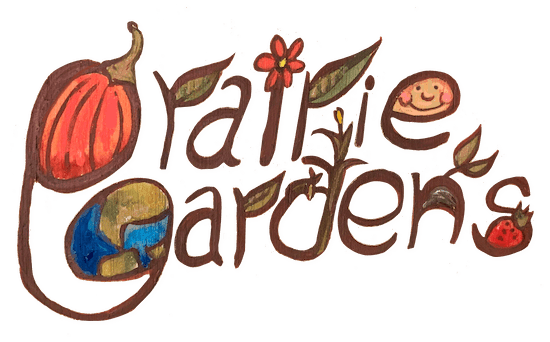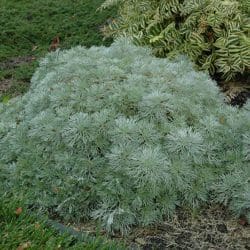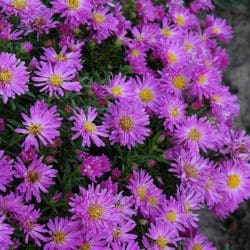Description
Full sun, deer, rabbit, and drought resistant, zone 3
Sempervivum ‘Pacific Blue Ice’
Pot size: 3/4″
The Pacific Blue Ice Hens and Chicks variety produces a unique cupped form. It is a mat-forming succulent that will produce thick, fleshy, and icy-blue-green leaves. As the weather gets colder, the rosette will become a rosy flushed color. In the summer a thick flowering stalk will arise from the centre hen rosette and bear a showy pink flower. The shape of this succulent is a rounded rosette.
Sempervivums are comprised of one large rosette called the “hen” which will then sprout many smaller rosettes around it called the “chicks”. As the plants age, the hen may die out and be replaced by the chicks. Plants can be easily divided and replanted. Particularly used for borders, containers, rock gardens, or as ground-covering. Sempervivums are monocarpic.
Prefers soil that is dry and well-drained. Will be drought tolerant once established. Heat tolerant and actually prefers poor soil (neutral or alkaline soil), over soil that is too rich or heavy clay. The Pacific Blue Ice has a medium growth rate. Gets to heights of 3-4inches and a spread of 6-8 inches. Surprisingly cold hardy, Sempervivums need little maintenance once established, and will survive near total neglect.
Hens and Chicks Pacific Blue Ice
$5.95
The Pacific Blue Ice Hens and Chicks variety produces a unique cupped form. It is a mat-forming succulent that will produce thick, fleshy, and icy-blue-green leaves. As the weather gets colder, the rosette will become a rosy flushed color. In the summer a thick flowering stalk will arise from the centre hen rosette and bear a showy pink flower. The shape of this succulent is a rounded rosette.
Sempervivums are comprised of one large rosette called the “hen” which will then sprout many smaller rosettes around it called the “chicks”. As the plants age, the hen may die out and be replaced by the chicks. Plants can be easily divided and replanted. Particularly used for borders, containers, rock gardens, or as ground-covering. Sempervivums are monocarpic.




